Spider Control Solutions – Expert Tips
Spiders are fascinating arachnids found worldwide, with over 48,000 species identified so far. These remarkable creatures play a crucial role in ecosystems by controlling insect populations. They come in various shapes, sizes, and colors, adapting to diverse environments from rainforests to deserts. Spiders are renowned for their silk-spinning abilities, creating intricate webs to capture prey or build shelters. While some spiders are venomous, most are harmless to humans. Understanding these incredible arachnids is essential for appreciating their ecological significance and ensuring coexistence with these often misunderstood creatures.
The different species of spiders
The most common species of spiders can vary by region, but some globally prevalent species include:
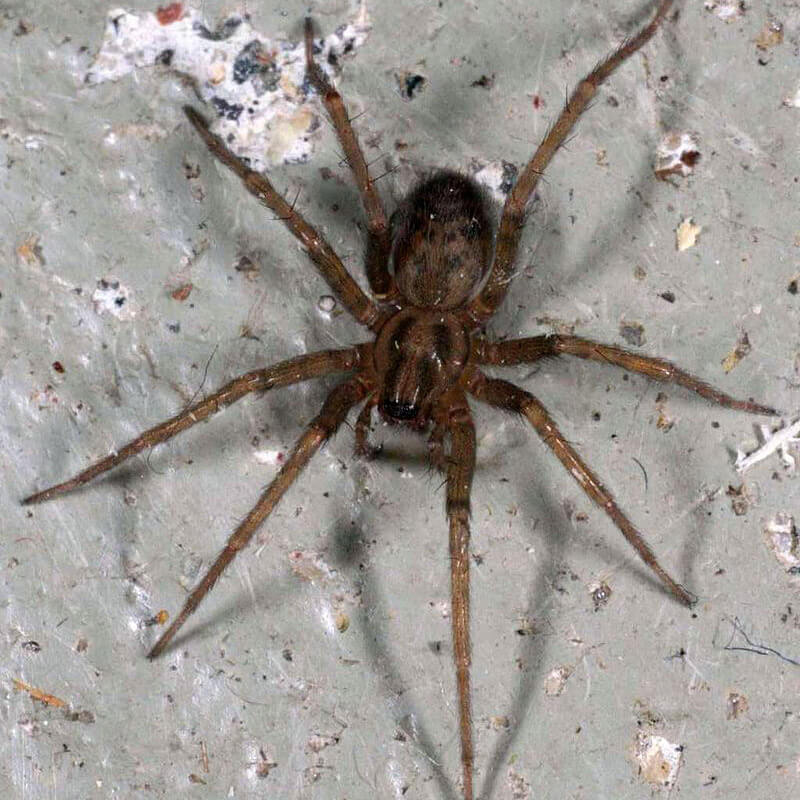
House Spiders (Tegenaria domestica)
These are often found in homes and buildings worldwide. They are known for their funnel-shaped webs and are generally harmless to humans.
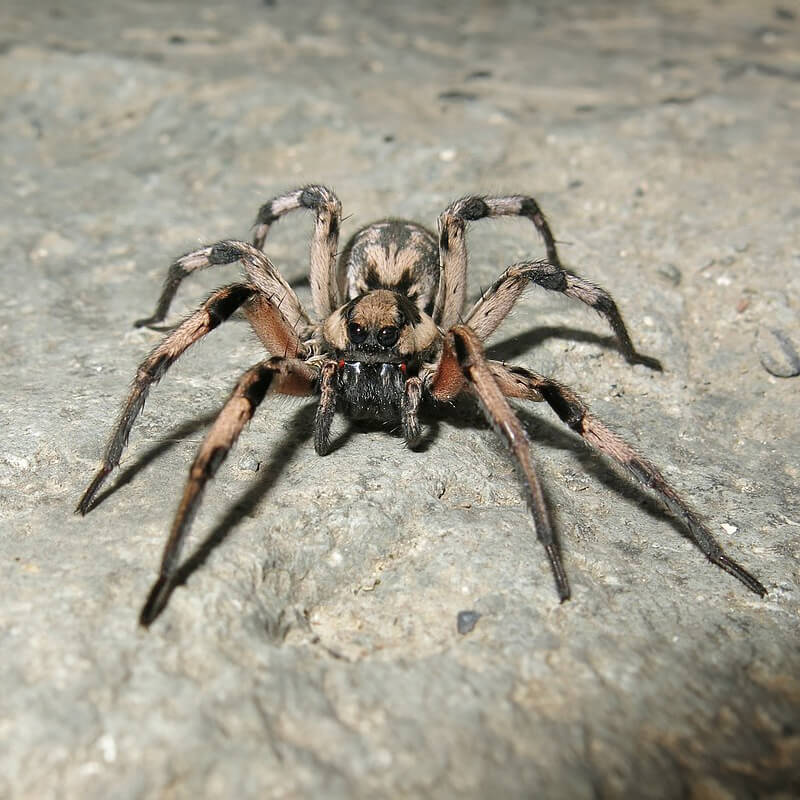
Wolf Spiders (Lycosidae)
These spiders are ground-dwelling hunters found in various environments, including grasslands and forests. They don’t build webs and actively stalk their prey.
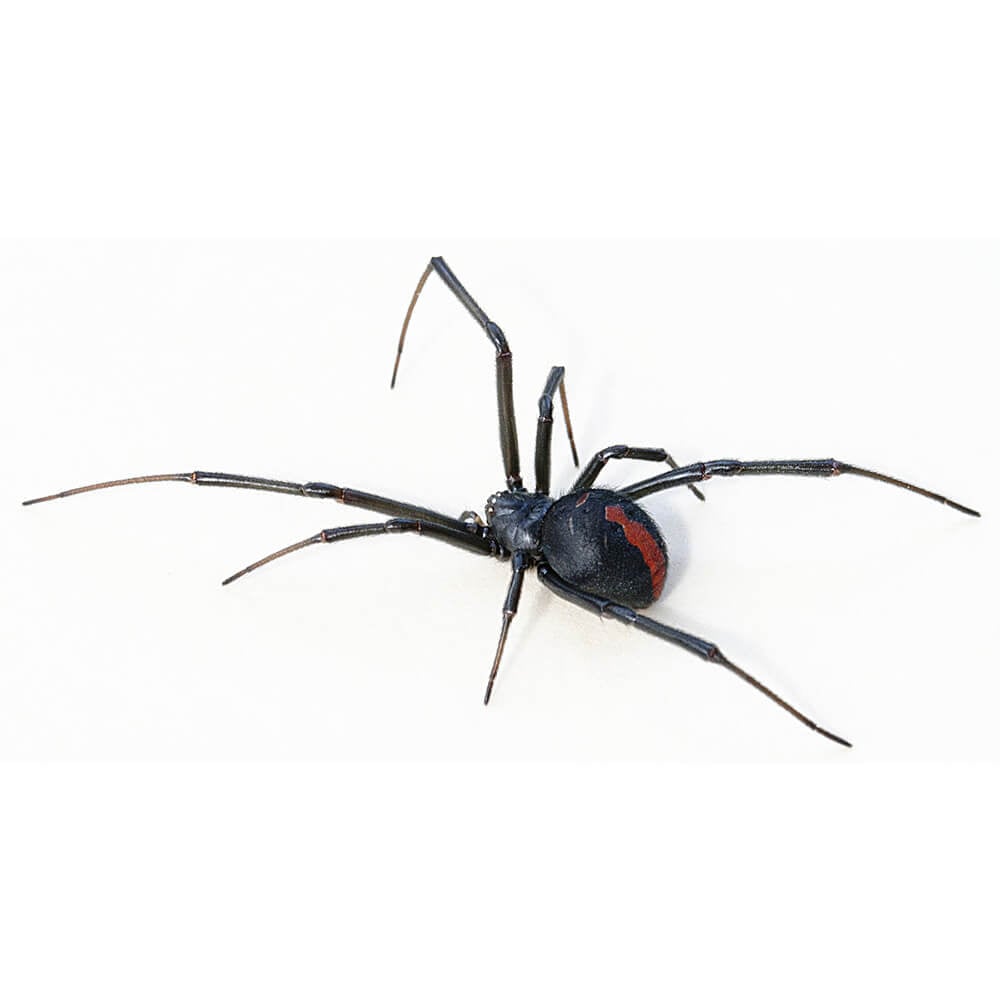
Black Widows (Latrodectus)
These venomous spiders are notorious for their distinctive black color with a red hourglass shape on the abdomen. They are found in various parts of the world and are known for their potent venom.

Garden Spiders (Araneidae)
Garden spiders, such as the orb-weaver spiders, are widespread in gardens and forests. They create distinctive, circular webs to catch flying insects.
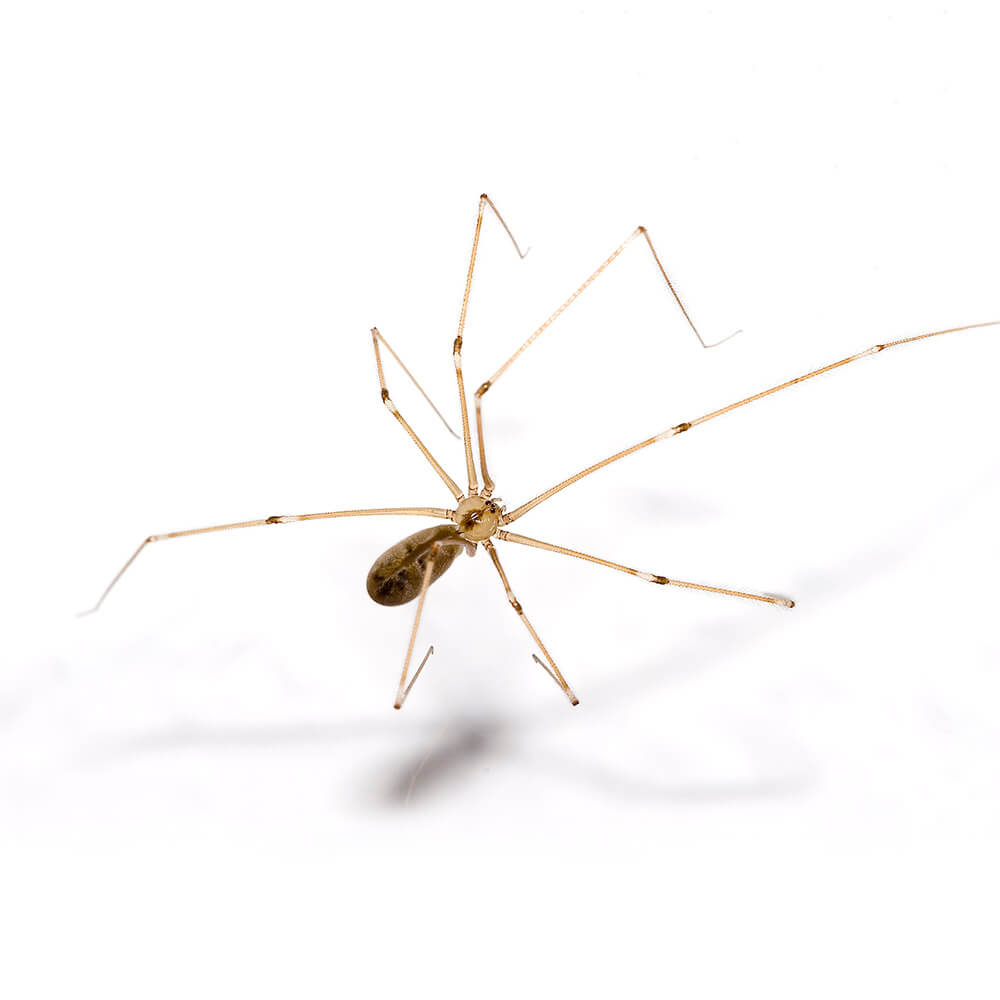
Daddy Longlegs (Pholcidae)
Daddy longlegs spiders are found in homes, basements, and dark corners. They are known for their long, thin legs and create irregular, messy webs.
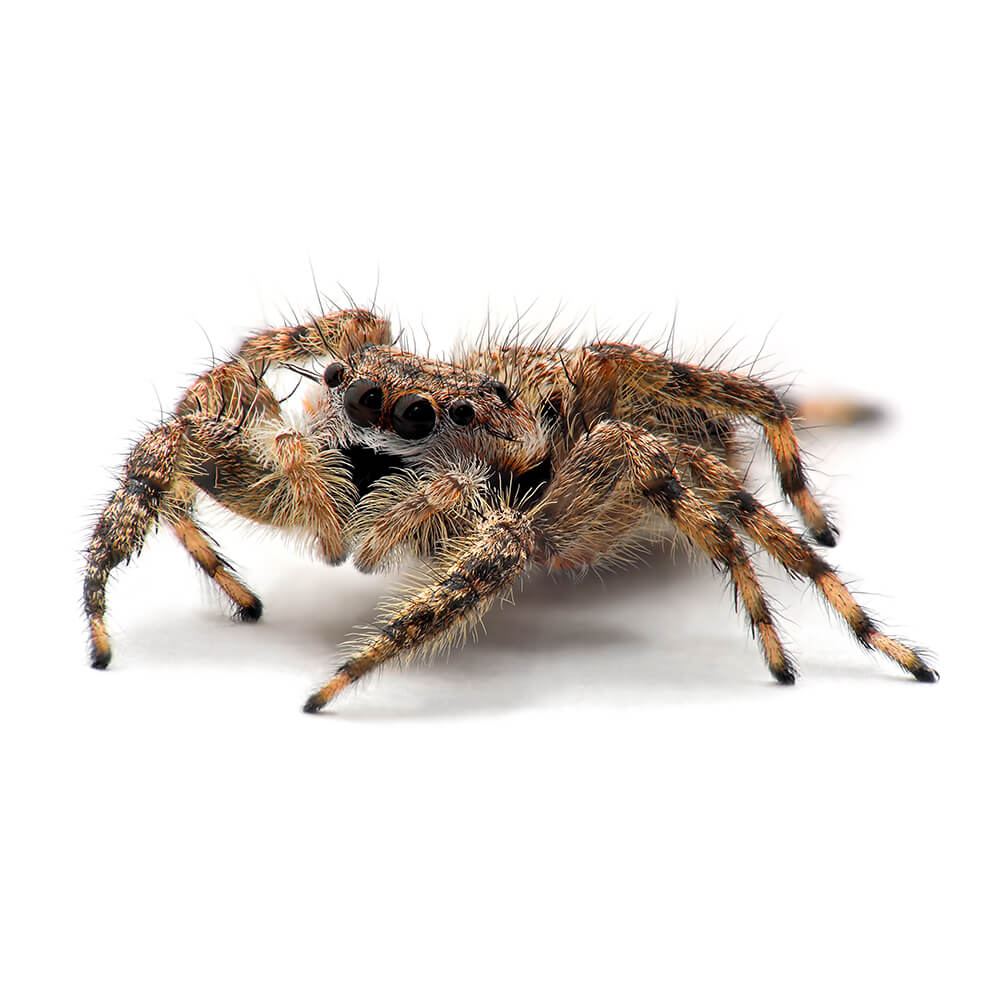
Jumping Spiders (Salticidae)
Known for their agility and excellent vision, jumping spiders can be found nearly everywhere, from urban areas to natural habitats.
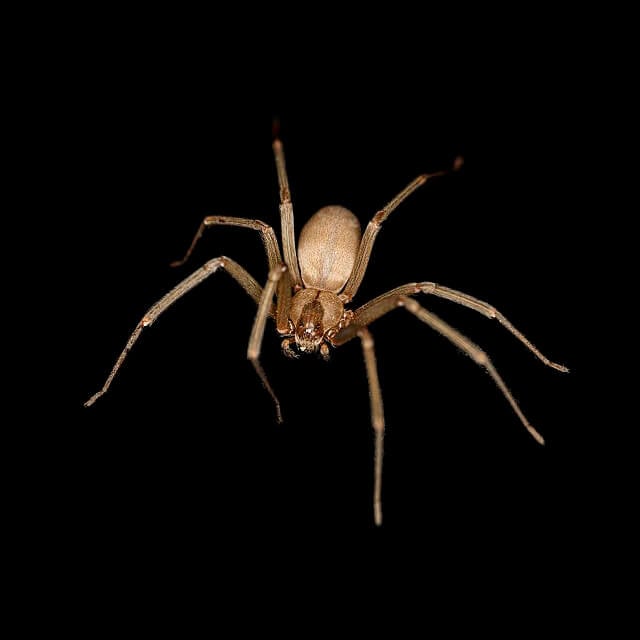
Brown Recluse Spiders (Loxosceles reclusa)
These spiders are found mainly in North America. They have a distinctive violin-shaped mark on their bodies and are known for their venomous bite.
It’s important to note that while many spider species are harmless to humans, some can be venomous. Identifying the specific spider species and understanding its behavior is crucial when dealing with spiders in different regions.
There are over 48,000 known species of spiders, and scientists believe there are many more yet to be discovered.
The life cycle of spiders
Spiders, those remarkable arachnids that often evoke a mix of fascination and trepidation, undergo a captivating life cycle that reveals the intricacies of their existence. This journey from birth to maturity encompasses several stages, each marked by unique behaviors and adaptations.

Egg Stage
The life of a spider begins as an egg, encased in a silken sac. Female spiders carefully construct these sacs, often hiding them in protective locations. The size and appearance of these egg sacs can vary among different spider species.

Molting
As spiderlings grow, they undergo a series of molts, shedding their exoskeletons to accommodate their increasing size. Molting is a critical phase in a spider’s life, allowing it to develop and repair damaged body parts.
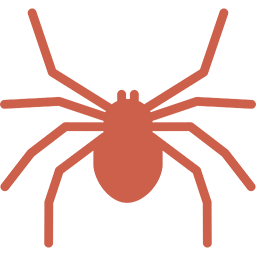
Maturity
Once a spider reaches maturity, it is ready for reproduction. Males and females engage in intricate courtship rituals, which can vary dramatically among species. Some male spiders must carefully approach a female to avoid becoming a meal. Successful mating results in the transfer of sperm, often through specialized structures called pedipalps, to the female.

Senescence and Death
Spiders do not live indefinitely. Many species have relatively short lifespans, and after reaching old age, they gradually weaken and eventually die. In some cases, female spiders die shortly after laying their eggs, while others may continue to live for some time.

Spiderlings
Once the eggs hatch, spiderlings emerge. These miniature versions of adult spiders are equipped with all the essential structures, including fangs and spinnerets for producing silk. Spiderlings are vulnerable at this stage and may disperse to avoid competition and predation.
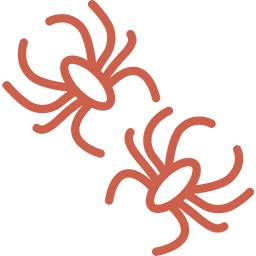
Juvenile Stage
After several molts, spiderlings enter the juvenile stage. They continue to grow and develop while honing their hunting or web-building skills, depending on their species. During this stage, spiders might create smaller versions of adult webs or construct rudimentary shelters.

Egg Laying
After mating, female spiders produce one or more egg sacs, each containing hundreds of eggs. The female may protect and tend to these sacs, or in some cases, she may leave them to hatch and fend for themselves.
Understanding the life cycle of spiders provides valuable insights into their behavior, ecology, and adaptations. These remarkable arachnids have evolved a diverse array of strategies for survival, from silk production to elaborate courtship rituals, making them a captivating subject of study for scientists and nature enthusiasts alike.
Some species of spiders have relatively long lifespans for arthropods. For example, female tarantulas can live for up to 25 years.
The seasons most conducive to spiders
Exploring the seasonal preferences of spiders can provide valuable insights for those intrigued by these remarkable arachnids. Spider behavior is closely linked to temperature, daylight hours, and the availability of prey. Here’s a closer look at the seasons that are most favorable to spiders:

Spring
As winter yields to spring’s warmth and longer days, spiders emerge from their winter inactivity. This season marks the beginning of heightened spider activity. They engage in mating rituals, construct intricate webs, and take advantage of the surge in insect populations, which become more active in response to the changing climate.

Early Autumn
The early days of autumn maintain favorable conditions for spider activity. While temperatures begin to dip, many spider species remain active, benefiting from the lingering warmth and a sustained supply of insects. Gardens, meadows, and forests remain abuzz with spider activity as they continue to spin their webs and hunt for prey.
Summer
Summer is the peak season for spiders in many regions. The combination of warm temperatures and extended daylight hours creates an optimal environment for these arachnids. Spiders thrive during this time, capitalizing on the abundance of insects. They build larger and more elaborate webs, hunt actively, and continue their reproductive efforts.

Late Autumn and Winter
Towards the end of autumn and into winter, spider activity gradually wanes. The colder temperatures and shorter days induce a slowdown in their metabolic processes. Many spiders seek refuge in protected locations, like cracks in walls or leaf litter, to hibernate or enter a state of torpor. Some may produce egg sacs, safeguarding their offspring until the arrival of spring.
It’s important to note that the specific seasons conducive to spiders can vary depending on geographical location and climate. By recognizing these seasonal patterns, one can gain a deeper appreciation for the world of spiders and their ecological role in various ecosystems.
Some female spiders practice sexual cannibalism, where they eat the male after mating. This behavior is not universal but occurs in some species.
Where do spiders come from, their habitat
Spiders, those intriguing arachnids with their distinctive eight legs, have a widespread presence across the globe, adapting to a wide range of habitats. Understanding where spiders come from and the environments they inhabit sheds light on their remarkable diversity. Here’s a glimpse into their origins and preferred habitats:

Ancient Origins
Spiders have an ancient lineage that dates back millions of years. They share a common ancestor with scorpions and other arachnids. These evolutionary adaptations have allowed them to thrive in various ecosystems.

Terrestrial Dominance
Most spider species are terrestrial, meaning they primarily inhabit the land. They can be encountered in grasslands, forests, meadows, and urban areas. Ground-dwelling spiders often construct burrows or shelters for protection and to ambush prey.

Aquatic Environments
A lesser-known group of spiders, known as water spiders or diving bell spiders, have adapted to aquatic life. They dwell in freshwater habitats, such as ponds, lakes, and slow-moving streams, where they create underwater webs or construct air-filled chambers to breathe and store prey.

Human Proximity
Spiders are not averse to human presence. They can be found in homes, gardens, and buildings, where they seek shelter and exploit a readily available food supply in the form of insects. Common house spiders, like the cellar spider and house spider, are examples of species adapted to urban environments.

Global Distribution
Spiders are found on every continent except Antarctica, showcasing their adaptability to diverse climates and landscapes. From dense rainforests to arid deserts, they have managed to carve out niches in virtually every corner of the world.

Arboreal Specialists
Some spiders have evolved to live in trees and bushes, where they build intricate orb webs or construct silken retreats among foliage. These arboreal spiders are well-suited to catching flying insects that venture into their webs.

Caves and Subterranean Worlds
Spiders have also colonized subterranean environments, including caves and underground burrows. These species have evolved specialized adaptations to thrive in the dark and often harsh conditions of these habitats.
Understanding the diverse habitats spiders occupy is essential for appreciating their ecological significance and coexisting with them. From the depths of forests to the corners of our homes, spiders demonstrate their remarkable ability to adapt and thrive in a multitude of environments, reminding us of the intricate balance of nature.
Spiders produce silk from specialized glands in their abdomen. They use silk for building webs, creating egg sacs, and even for making draglines for safety.
What attracts spiders into our homes
The presence of spiders in our homes can sometimes leave us wondering about the factors that entice these arachnids indoors. While we may not always welcome them as houseguests, understanding what attracts spiders into our homes can help us take proactive steps for prevention. Here are some key factors that contribute to spiders finding their way inside:
Shelter and Safety
Spiders seek refuge from harsh weather conditions, predators, and other threats. Our homes offer an array of hiding spots and protective nooks, making them an attractive sanctuary for these arachnids.
Entry Points
Small cracks, gaps, and openings in windows, doors, walls, and foundations serve as entry points for spiders. These arachnids can squeeze through surprisingly tiny gaps, making it relatively easy for them to infiltrate our living spaces.
Natural Landscaping
Homes surrounded by gardens, shrubs, or trees can serve as bridges for spiders to access our homes. They may travel along branches, leaves, or other outdoor elements, eventually making their way indoors.
Abundant Prey
Spiders are opportunistic hunters, and our homes provide an ample supply of insects, which serve as their primary food source. Flies, mosquitoes, moths, and other pests are drawn to our living spaces, offering a readily available source of sustenance for resident spiders.
Ambient Lighting
Light sources, especially at night, attract insects, which, in turn, attract spiders. Porch lights, indoor lighting, and even the glow from electronic devices can lure insects closer to our homes and subsequently draw spiders seeking a meal.
Seasonal Patterns
Spiders may become more active indoors during specific seasons, such as autumn, as they seek suitable locations to lay their eggs. This can result in a temporary influx of spiders.
Warmth and Comfort
Like many creatures, spiders are sensitive to temperature changes. During colder seasons, they may venture indoors in search of warmth and a more stable climate. Our heated homes can be particularly inviting in this regard.
Moisture and Humidity
Some spider species are attracted to moisture-rich environments. Leaky pipes, damp basements, and areas with high humidity levels can make our homes appealing to these species, which may seek out these conditions for survival.
Previous Infestations
If you’ve had previous issues with spiders in your home, the lingering presence of webs, egg sacs, or pheromones can attract new spiders, as they perceive it as a suitable environment.
Understanding what draws spiders into our homes allows us to take preventive measures. Sealing entry points, reducing moisture, and addressing pest infestations are effective ways to deter spiders from making themselves at home indoors. While spiders play essential roles in ecosystems, we can strike a balance that ensures their presence remains primarily outside our living spaces.
Most spiders are venomous, but the majority of them have venom too weak to harm humans. Only a few species have venom potent enough to be a threat to people.
Signs that you have a spiders’ infestation
While having a few spiders in your home is normal and can even be beneficial for controlling other pests, a spider infestation can become a cause for concern. Identifying the signs of a spider infestation early can help you take appropriate action to manage the situation. Here are some key indicators to watch for:
Web Presence
One of the most obvious signs of a spider infestation is an abundance of webs. Different spider species construct various types of webs, so you may notice orb-shaped webs, cobwebs, or funnel webs in corners, on walls, or in undisturbed areas of your home.
Insect Activity
Spiders are attracted to areas with a stable food supply. If you notice an increase in other insects like flies, mosquitoes, or moths in your home, it could signal the presence of a spider infestation, as these pests serve as spider prey.
Nighttime Activity
Some spider species are nocturnal and become more active at night. If you frequently spot spiders during the evening hours, it may suggest an infestation.
Frequent Sightings
If you consistently see a high number of spiders indoors, it could be a sign of an infestation. While the occasional spider is normal, an excessive population suggests a larger issue.
Multiple Species
The presence of various spider species within your home may indicate a more extensive infestation. Different spiders occupy distinct ecological niches, and their coexistence indoors can be a sign of an unmanaged problem.
Spider Bites
While not a definitive sign, unexplained spider bites on family members or pets could be an indicator of increased spider activity within your home.
Egg Sacs
Spider egg sacs can be found attached to walls, ceilings, or hidden in corners. These sacs contain numerous spiderlings and indicate the presence of breeding spiders.
Dark, Undisturbed Areas
Spiders often prefer hiding in undisturbed, dark places. Check basements, attics, crawl spaces, and storage areas for signs of spider activity, including webs and egg sacs.
Shed Exoskeletons
Spiders molt as they grow, leaving behind their exoskeletons. Finding these discarded skins in your home is evidence of spider activity.
If you suspect a spider infestation in your home, it’s essential to address it promptly. You can start by removing webs, sealing entry points, reducing clutter, and implementing pest control measures to manage both the spider population and their prey. If the infestation is extensive or poses health risks due to venomous spiders, seeking professional pest control services is advisable for effective management and prevention.
Many spiders are nocturnal, meaning they are most active at night. They have adapted to low light conditions and rely on their sensory organs, like specialized hairs on their legs, to navigate and hunt in the dark.
Rooms where spiders hide
Spiders are notorious for their elusive nature, often hiding in discreet corners of our homes. To effectively manage these arachnids or simply satisfy your curiosity, it’s essential to know where they commonly seek refuge. Here are the rooms and areas where spiders tend to hide:

Basements
Basements are a favored hideout for spiders due to their dark, cool, and relatively undisturbed environment. Spiders can often be found in corners, crevices, and behind stored items.
Garages
Garages offer spiders numerous hiding spots amidst clutter, tools, and stored items. Pay close attention to corners, shelves, and areas with less traffic.
Closets
Spiders can find shelter among your clothes and shoes. Dusty, less-frequented closets can be especially appealing.
Kitchen
Spiders can sometimes be found near food sources or hiding behind appliances. Be sure to inspect under counters, behind refrigerators, and in the pantry.
Attics
Like basements, attics provide spiders with a quiet, secluded space. They may hide in insulation, cardboard boxes, or rafters.
Utility Rooms
Rooms housing water heaters, furnaces, and laundry facilities can attract spiders due to the warmth and moisture generated by these appliances. Check behind or around such equipment.
Bedrooms
While less common, spiders can occasionally be found in bedrooms, often near windows or under the bed.
Dining Rooms
Dining areas with infrequent use may have spiders in corners or beneath tables and chairs.
Crawl Spaces
Crawl spaces beneath your home are ideal hiding spots for spiders. They can access these areas through cracks or vents, where they find the darkness and moisture they prefer.
Bathrooms
Bathrooms provide spiders with damp conditions that some species favor. Inspect around sinks, toilets, and behind cabinets or vanities.
Living Rooms
Check behind and under furniture, as well as in the corners of living rooms. House spiders, like the common cellar spider, may be present.
Outdoor Spaces
Don’t forget about outdoor areas attached to your home, such as porches, decks, or patios. Spiders may create webs in these spaces and venture indoors from there.
It’s important to note that not all wasps hide in indoor spaces. Many species prefer outdoor nesting sites and only enter homes accidentally or foraging for food. If you suspect that wasps have nested indoors or are hiding in specific rooms, it’s advisable to seek professional pest control assistance for safe removal and proper control measures. Attempting to remove nests or wasps without the necessary knowledge and equipment can lead to stings and further infestations.
Spiders are voracious predators. They eat insects, and some larger species can catch and consume small birds, frogs, and even fish.
The dangers and damages that spiders can cause
While the majority of spider species are harmless to humans and play crucial roles in ecosystems by controlling insect populations, some can pose risks and create minor inconveniences. It’s important to understand the potential dangers and damages that spiders can cause:
Bites
Some spiders, such as the black widow and brown recluse, are venomous and capable of delivering painful, and in rare cases, medically significant bites. These bites can cause symptoms ranging from localized pain and swelling to more severe reactions, including muscle cramps, fever, and tissue necrosis.
Psychological Stress
The mere presence of spiders can induce fear or anxiety in some individuals, leading to psychological distress. This fear, known as arachnophobia, can affect daily life and well-being.
Insect Control
While many people appreciate spiders for their role in controlling insect populations, others may find their webs unsightly or be concerned about potential insect infestations that attract spiders.
Venomous Species
In regions where venomous spiders are prevalent, bites can be a genuine concern, especially for vulnerable populations such as children, the elderly, or individuals with compromised immune systems.
Allergic Reactions
In rare instances, individuals may develop allergic reactions to spider bites, which can lead to hives, itching, difficulty breathing, or anaphylaxis. Such reactions are uncommon but can be life-threatening.
Web Damage
Spiders that construct webs indoors can create unsightly, difficult-to-clean accumulations of silk and prey remnants. While this is generally a minor issue, it can be an aesthetic concern for homeowners.
Invasion of Living Spaces
Spiders that enter homes in search of prey or suitable environments may inadvertently invade living spaces, leading to encounters that some individuals find unsettling.
It’s important to note that most spider species are harmless and do not pose a threat to humans. Additionally, spiders are valuable contributors to ecosystems by controlling insect populations and serving as prey for other wildlife.
To mitigate potential dangers and damages from spiders, it’s advisable to take preventive measures such as sealing entry points, keeping indoor spaces clean, and, when necessary, seeking professional pest control assistance to manage spider populations. If you suspect a venomous spider bite or experience severe symptoms, seek medical attention promptly to ensure proper treatment and care.
Spiders don’t grow continuously but instead molt to grow. They shed their exoskeleton and form a new one, which allows them to increase in size
How to get rid of spiders / Available treatments
Dealing with a spider infestation or simply wanting to keep your home spider-free? There are several effective methods and treatments available to help you get rid of spiders.
Regular Cleaning
Keeping your home clean is one of the simplest and most effective ways to deter spiders. Vacuum regularly to remove spider webs, dust, and potential prey like insects. Pay attention to corners, ceilings, and less-frequented areas.
Indoor Plants
Some indoor plants, like eucalyptus, mint, and lavender, can act as natural spider repellents due to their scent. Place these plants strategically to deter spiders.
Chemical Pesticides
Commercial spider sprays or insecticides can be used as a last resort for severe infestations. Follow product instructions carefully and exercise caution when using chemicals indoors.
Vacuum and Dispose
If you spot a spider indoors, use a vacuum cleaner to safely capture it and then dispose of the vacuum bag or contents outdoors to prevent its return.
Sealing Entry Points
Spiders often enter homes through cracks, gaps, or openings around windows, doors, and foundations. Use caulk or weather stripping to seal these entry points and deny spiders access.
Remove Outdoor Debris
Keep the area around your home tidy by clearing away leaves, woodpiles, and debris. These outdoor hiding spots can serve as launch points for spiders to enter your home.
Professional Pest Control
If you’re dealing with a persistent or venomous spider infestation, it’s advisable to consult a pest control professional. They can assess the situation, identify the spider species, and implement targeted treatments to eliminate the problem safely.
Regular Outdoor Maintenance
Trim back trees and bushes that touch or overhang your home, as they can provide access routes for spiders. Regularly clean and maintain outdoor lighting, which can attract insects and subsequently, spiders.
Reduce Clutter
Clutter in your home provides hiding spots for spiders. Minimize clutter in basements, attics, and storage areas to make it less hospitable for them.
Use Natural Repellents
Essential oils like peppermint, citrus, or tea tree oil can be diluted and sprayed in spider-prone areas. Spiders are known to dislike these scents.
Spider Traps
Sticky traps or glue boards designed for spiders can be placed in areas with high spider activity. These traps are non-toxic and capture spiders as they walk over them.
Keep in mind that many spider species are harmless and even beneficial for controlling other pests. Before resorting to treatment, consider whether their presence is a manageable issue or a natural part of your local ecosystem. By employing these methods and treatments, you can effectively reduce or eliminate spider populations in your home while maintaining a safer and more comfortable living environment.
Spider silk is incredibly strong, yet lightweight. It is often cited as being stronger than steel of the same diameter. Some researchers are exploring its potential for use in various applications, including bulletproof clothing and medical sutures.
How to prevent spiders infestations
Preventing spider infestations in your home is often more manageable and less stressful than dealing with them once they’ve taken hold. By taking proactive steps, you can create an environment that is less attractive to spiders and minimize the chances of an infestation.
Regular Cleaning
Regular and thorough cleaning is your first line of defense against spiders. Vacuum and dust regularly to eliminate webs, eggs, and prey insects. Pay particular attention to corners, ceiling spaces, and hidden areas.
Reduce Outdoor Lighting
While outdoor lighting is essential for safety, it can attract insects, which in turn attract spiders. Consider using yellow or sodium vapor lights that are less attractive to insects.
Natural Repellents
Use natural spider repellents like essential oils (e.g., peppermint, lavender, or citrus) to deter spiders. Dilute these oils with water and spray them in spider-prone areas.
Outdoor Insect Traps
Place outdoor insect traps away from your home to capture flying insects before they enter. Fewer insects around your home mean fewer spiders.
Seal Entry Points
Spiders enter homes through small gaps and cracks around windows, doors, foundations, and vents. Seal these entry points using caulk, weather stripping, or screens to deny them access.
Install Screens
Ensure that windows and doors have properly fitting screens to prevent spiders from entering. Check for any tears or holes in existing screens and repair them promptly.
Remove Outdoor Debris
Regularly clean outdoor spaces, including decks, patios, and porches, to remove debris and spider-friendly hiding spots.
Professional Inspection
Periodically schedule professional pest inspections to detect any potential spider infestations early and take preventive measures.
Outdoor Maintenance
Keep the area around your home clean and well-maintained. Trim bushes, trees, and vegetation that come into contact with your house, as they can serve as bridges for spiders to enter. Remove debris and clutter from around your property.
Minimize Moisture
Spiders are drawn to damp areas. Fix any leaks, drips, or areas of excessive moisture in your home, especially in basements and crawl spaces.
Regular Pest Control
Consider implementing a regular pest control routine to keep insects, which are a primary spider food source, in check. Fewer insects can lead to fewer spiders.
Educate Yourself
Familiarize yourself with common spider species in your area. Knowing their habits and behaviors can help you identify and address potential infestations more effectively.
By implementing these preventive measures, you can create an environment that is less appealing to spiders and reduce the likelihood of infestations. Keep in mind that not all spiders are harmful, and their presence can even be beneficial in controlling other pest populations. Balancing spider management with ecological considerations is essential for maintaining a healthy and comfortable living space.
Conclusion
In conclusion, spiders are intriguing creatures with a diverse array of species inhabiting nearly every corner of the world. While most spiders play essential roles in ecosystems by controlling insect populations, they can sometimes become unwelcome guests in our homes. Understanding the signs, potential dangers, and damages associated with spider infestations is crucial for effective prevention and management.
By implementing proactive measures such as regular cleaning, sealing entry points, and reducing outdoor clutter, homeowners can create an environment that is less appealing to spiders. Natural repellents, professional pest control, and outdoor insect traps can also be valuable tools in spider prevention.
It’s essential to strike a balance between managing spider populations and recognizing their ecological importance. While spiders can sometimes be a nuisance, they remain an integral part of the natural world, contributing to the delicate balance of our ecosystems. With the right knowledge and preventive measures, we can coexist with these fascinating arachnids while maintaining a comfortable and spider-free living environment.
